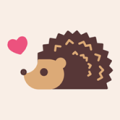The Japanese Bobtail Cat Breed: History, Care, Adoption, and More. The Japanese Bobtail, with its distinctive bobbed tail and vibrant personality, holds a special place in Japanese culture and hearts worldwide. This intelligent and affectionate breed makes a wonderful family companion. Let’s explore their captivating history, breed standards, care, and how to bring one into your life.
A Legacy of Luck and Legend
For over a millennium, the Japanese Bobtail has graced Japan, appearing in ancient art and folklore as a symbol of good fortune. Believed to have originated in China or Korea, they found favor with Japanese nobility and even the imperial family. They’re famously linked to the “Maneki-neko,” the beckoning cat, a talisman of prosperity. In the 20th century, their charm reached the United States, where breeders solidified their unique traits, leading to CFA recognition in 1976.
Cats hold a significant place in Japanese folklore, often depicted as both mysterious and supernatural. Like in many cultures, they are sometimes feared or distrusted due to their supposed mystical abilities. However, in Japan, a cat’s tail length plays a key role in mythology. The Japanese Bobtail is considered auspicious, while long-tailed cats are sometimes believed to be nekomata…malevolent spirits.
The maneki-neko, or “beckoning cat,” is a well-known symbol of good fortune. Depicted as a Japanese Bobtail with one paw raised, it is commonly placed at store entrances and homes, often in calico, gold, or black. Its origins trace back to a legend where a cat’s beckoning gesture saved a man from a falling branch, reinforcing its status as a lucky charm. Japanese Bobtails also frequently appear in traditional paintings.
One legend about the breed’s short tail tells of a cat whose long tail caught fire while sleeping, spreading flames throughout the town. After the capital burned down, the Emperor allegedly ordered all cats’ tails to be shortened as a precaution.
Despite folklore favoring short-tailed cats, the Japanese Bobtail’s prominence likely stems from its deep historical roots in Japan. Originating from the Asian continent, it was introduced via Korea during the Asuka period (6th century CE), arriving alongside other valued elements of Chinese culture.
Distinctive Features
The Japanese Bobtail boasts an elegant physique:
- Lean, muscular, and balanced build.
- Expressive, large oval eyes.
- Alert, high-set ears.
- A unique, short, pom-pom-like tail.
- Soft, silky coat, available in long and short-haired varieties.
- A range of colors, with calico (“Mi-ke”) prized in Japan.
A Playful and Affectionate Companion
Known for their playful and friendly nature, Japanese Bobtails are intelligent and curious. They crave companionship, often following their owners and communicating with chirps and trills. They’re excellent with children, other pets, and even dogs, making them ideal family members. They enjoy interactive games, puzzles, and climbing.

Did you find this article useful? Would you like 100% free access to more articles like these, and free access to over 5,000 vetted pet care service professionals throughout the United States? Sign up here for a free Petworks account, and take 10% off your first booking, on us!
Why They Excel as Family Pets
- Great with Kids: Playful and gentle.
- Low Maintenance: Easy grooming.
- Adaptable: Thrives in various environments.
- Intelligent: Trainable and engaging.
Bringing Home a Bobtail
Adoption Options:
- Japanese Bobtail Rescues (U.S.)
- Purebred Cat Rescues
- Local Shelters and Humane Societies
- Online Platforms (Petfinder, Adopt-a-Pet)
Adopting Process:
- Research the breed
- Find a rescue or shelter
- Submit an application
- Meet the Japanese Bobtail kitten
- Pay fees and complete paperwork
- Prepare your home
- Schedule a vet check-up
“The Japanese Bobtail is a remarkable blend of beauty, grace, and intelligence, with a unique cultural legacy that spans centuries. At Petworks, we recognize this breed not just for its iconic tail and striking appearance, but for its playful spirit and deep bonds with humans. They’re a testament to how personality and heritage can coexist in a truly exceptional feline companion.”
— Kevin Kinyon, Founder of Petworks
Adoption Fees For A Japanese Bobtail
Costs can vary significantly across different regions in the United States, typically ranging from $50 to $200. These fees often cover expenses such as vaccinations, spaying or neutering, and initial veterinary care.
In urban areas with higher living costs, such as New York City or San Francisco, adoption fees may be on the higher end of this spectrum. Conversely, in regions with lower living expenses, fees might be more affordable.
Given the rarity of Japanese Bobtails, finding one in a local shelter can be uncommon. Specialized rescue organizations or breed-specific rescues may have higher adoption fees due to the specialized care and transportation costs involved.
It’s advisable to contact local shelters, rescue groups, or breed-specific organizations in your area to inquire about the availability of Japanese Bobtails and obtain precise information on adoption fees. Additionally, some organizations may offer discounts during special events or for adopters meeting certain criteria, such as seniors or veterans.
Caring for Your Bobtail
Kitten Care:
- High-quality kitten food
- Socialization
- Litter training
- Interactive playtime
Veterinary Care:
- Vaccinations
- Spaying/neutering
- Parasite prevention
- Dental care
Nutrition:
- High protein feline diet
- Limited fillers
- Hydration
- Fresh water
Grooming:
- Regular brushing
- Nail trimming
- Ear cleaning
- Occasional baths
 Cultural Icon
Cultural Icon
The Japanese Bobtail is a cultural icon, inspiring the Maneki-neko and appearing in anime, manga, and folklore.
Fun Facts:
- Each tail is unique.
- One of the oldest natural breeds.
- Enjoys water.
- Longer back legs for elegant posture.
- Trainable.
The iconic character of Hello Kitty, a global symbol of cuteness and cultural phenomenon, has strong ties to the characteristics of the Japanese Bobtail cat breed. While Hello Kitty is a stylized character, her design draws clear inspiration from this distinctive feline.
Here’s how the Japanese Bobtail influences the Hello Kitty design:
- The Bobbed Tail:
- A key feature of the Japanese Bobtail is its unique, short, “pom” tail. While Hello Kitty’s tail is rarely visible in her depictions, the concept of a small, rounded tail aligns with the Bobtail’s defining characteristic. This subtle nod to the breed’s signature trait is a significant connection.
- Physical Features:
- Hello Kitty’s rounded face, large oval eyes, and overall petite appearance resonate with the physical attributes of the Japanese Bobtail. The breed is known for its elegant, balanced physique, which translates into Hello Kitty’s charming and delicate design.
- It is also noted that Hello Kitty is designed after a white Japanese Bobtail.
- Kawaii Aesthetic:
- The “kawaii” (cute) aesthetic is central to both the Japanese Bobtail and Hello Kitty. The breed’s gentle expression and playful nature contribute to its endearing quality, which is mirrored in Hello Kitty’s universal appeal.
 It is important to note, that while the influence is clear, Hello Kitty is a stylized cartoon character. However, the connection to the Japanese Bobtail breed contributes to her cultural context and the characteristics that make her so loved.
It is important to note, that while the influence is clear, Hello Kitty is a stylized cartoon character. However, the connection to the Japanese Bobtail breed contributes to her cultural context and the characteristics that make her so loved.
Japanese Bobtail Behavior
They are known for their vocal and communicative nature, often using a soft, melodious voice to “talk” with their owners. This breed forms strong bonds with its human family and enjoys following them from room to room. Their curious and adventurous personality means they love exploring their surroundings, climbing, and playing with interactive toys.
Professional cat behaviorists agree, Japanese Bobtails are also exceptionally intelligent and trainable. They can learn commands, enjoy fetch-like games, and even adapt well to leash training. Their sociable and friendly temperament makes them excellent family pets, and they get along well with children and other animals.
Because of their high energy levels, they require mental stimulation and physical activity to stay happy. Puzzle toys, climbing structures, and daily playtime are essential to keep them entertained. Despite their playful nature, they are also affectionate lap cats, often curling up next to their owners for companionship.
Overall, the Japanese Bobtail is a joyful, intelligent, and affectionate breed that thrives in an engaging and loving home environment. Their friendly and adaptable nature makes them a wonderful addition to families looking for an interactive and playful feline companion.
A Forever Companion
The Japanese Bobtail is a charming and affectionate breed. Adopting from a shelter or rescue provides a loving cat with a forever home. With proper care, your Bobtail will bring joy and companionship for years to come.
 In 2021, Dr. Marty Goldstein DVM joined the pet care platform Petworks as an advisor in its Animal Nutrition care division. Dr Marty Nature’s Blend is on a mission to help your pets live their healthiest lives possible. Dr. Marty’s pet nutrition expertise and guidance has helped Petworks evolve and become the preeminent animal and pet nutrition consultation service for pet parents in North America.
In 2021, Dr. Marty Goldstein DVM joined the pet care platform Petworks as an advisor in its Animal Nutrition care division. Dr Marty Nature’s Blend is on a mission to help your pets live their healthiest lives possible. Dr. Marty’s pet nutrition expertise and guidance has helped Petworks evolve and become the preeminent animal and pet nutrition consultation service for pet parents in North America.
 In 2022, Blue Buffalo Founder Bill Bishop Jr. joined Petworks as Senior Advisor in our Animal Nutrition Care Division. Bill brings his extensive expertise in pet food innovation and business leadership. His guidance helps Petworks enhance our pet nutrition service offerings, helping to ensure that pet parents throughout the world receive trusted, science-backed nutritional support for their dogs, cats, and animals.
In 2022, Blue Buffalo Founder Bill Bishop Jr. joined Petworks as Senior Advisor in our Animal Nutrition Care Division. Bill brings his extensive expertise in pet food innovation and business leadership. His guidance helps Petworks enhance our pet nutrition service offerings, helping to ensure that pet parents throughout the world receive trusted, science-backed nutritional support for their dogs, cats, and animals.
About The Author
 Petworks Co-Founder Kevin Kinyon is a life-long animal lover who works tirelessly to improve the lives of pets and their parents. Human and animal qualities he values most are integrity, humor, and empathy.
Petworks Co-Founder Kevin Kinyon is a life-long animal lover who works tirelessly to improve the lives of pets and their parents. Human and animal qualities he values most are integrity, humor, and empathy.


